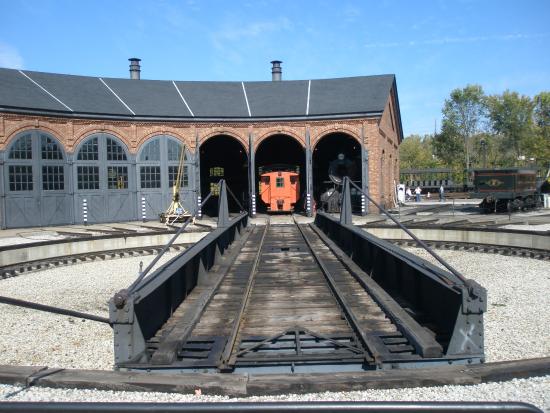Much of the asbestos exposure experienced by railroad workers in Michigan occurred in what was known as Roundhouses. Throughout the state of Michigan, roundhouses were locations where train cars were serviced, maintained, and repaired beginning in the late 19th century.
The types of asbestos products that railroad workers were exposed to changed significantly when diesel engines replaced steam in the mid-20th century. The use of Roundhouses for repair and maintenance continued throughout the 20th century. A few are still in use today.
Some examples of the types of asbestos products used at these locations were asbestos rope and cloth used for track maintenance, asbestos boiler and pipe covering, insulated electrical and plumbing products, brake linings, and many others.
An example of at-risk trades in the railroad industry were track maintenance workers, equipment operators, yardmasters, conductors, brakemen, train engineers, mechanics, boiler workers, blacksmiths, machinists, pipefitters, section hands, and other trades. Section hands (track repairmen) were also known as gandy dancers. Interestingly, the restaurant known as the Gandy Dancer in Ann Arbor is situated in the 100-year-old train station, which was replaced by a new station in 1983.
In Michigan, many of our railroad workers who developed mesothelioma or lung cancer were exposed to asbestos in the Roundhouses that are listed below along with the railroad company that owned and utilized the sites.
Roundhouses in Michigan
- Adrian – Lake Shore & Michigan Southern
- Alpena – Detroit & Mackinac
- Battle Creek – Grand Trunk
- Bay City – Michigan Central
- Calumet – Calumet & Hecla
- Champion – Chicago, Milwaukee, St. Paul & Pacific
- Detroit – Michigan Central
- Detroit – Grand Trunk
- Durand – Grand Trunk
- Elberta – Ann Arbor
- Escanaba – Chicago & Northwestern
- Flatrock – Detroit, Toledo, and Ironton
- Gladstone – Minneapolis, St. Paul & Sault Ste. Marie
- Grand Rapids – Michigan Central
- Grand Rapids – Pere Marquette
- Hancock – Quincy & Torch Lake
- Holland – Pere Marquette
- Iron Mountain – Chicago & Northwestern
- Ishpeming Chicago & Northwestern
- Jackson – Michigan Central
- Kalamazoo – Michigan Central
- Kalamazoo – Kalamazoo & South Haven Railroad
- Ludington – Pere Marquette
- Manistee & Northeastern
- Marshall – Detroit, Toledo & Milwaukee Road
- New Buffalo – Pere Marquette
- Niles – Missouri Central
- Owosso – Ann Arbor
- Plymouth – Pere Marquette
- Pontiac – Grand Trunk Western
- Port Huron – Grand Trunk
- Port Huron – Port Huron & Detroit
- River Rouge – Michigan Central Railroad
- Saginaw – Pere Marquette
- Wells – Escanaba & Lake Superior
The Henry Ford Museum acquired the Marshall MI Roundhouse in 1991 and it was reconstructed and placed at Greenfield Village in Dearborn in 2000. See the photo of the reconstructed Roundhouse below.

Contact Serling & Abramson, P.C. if you have questions concerning asbestos exposure and the resulting development of mesothelioma or lung cancer.




